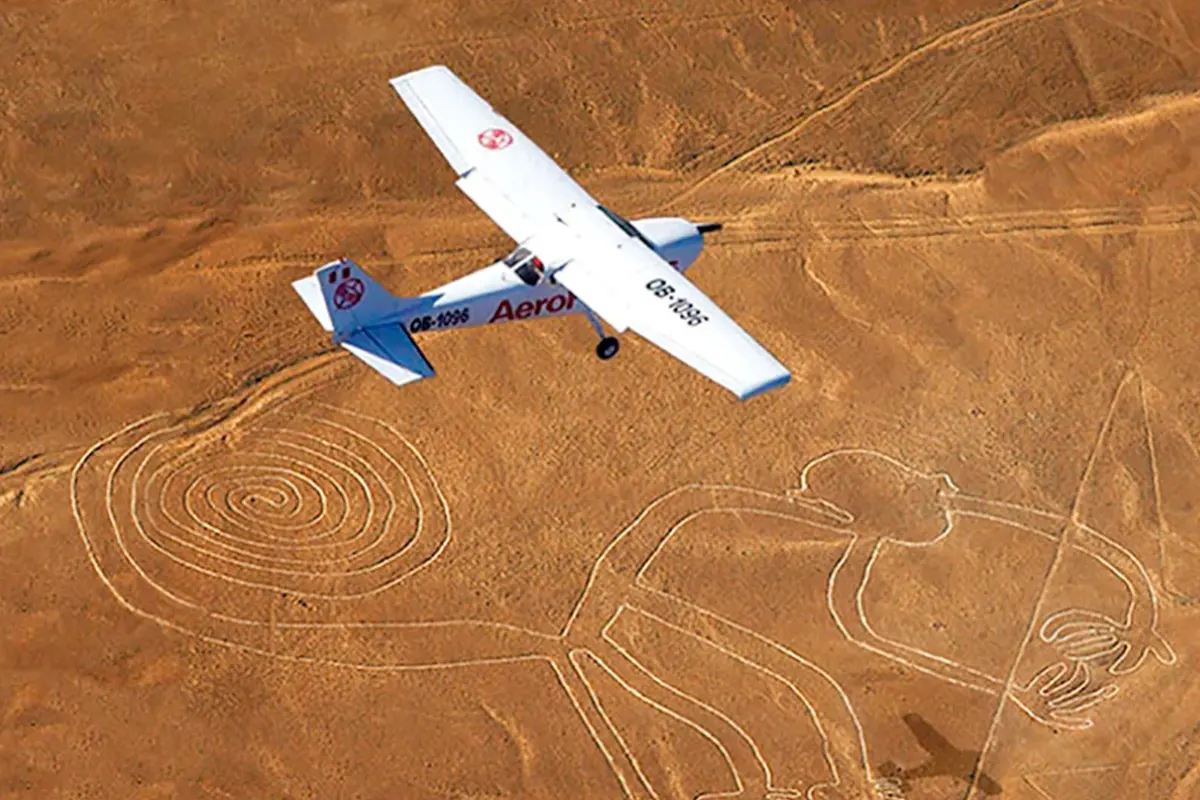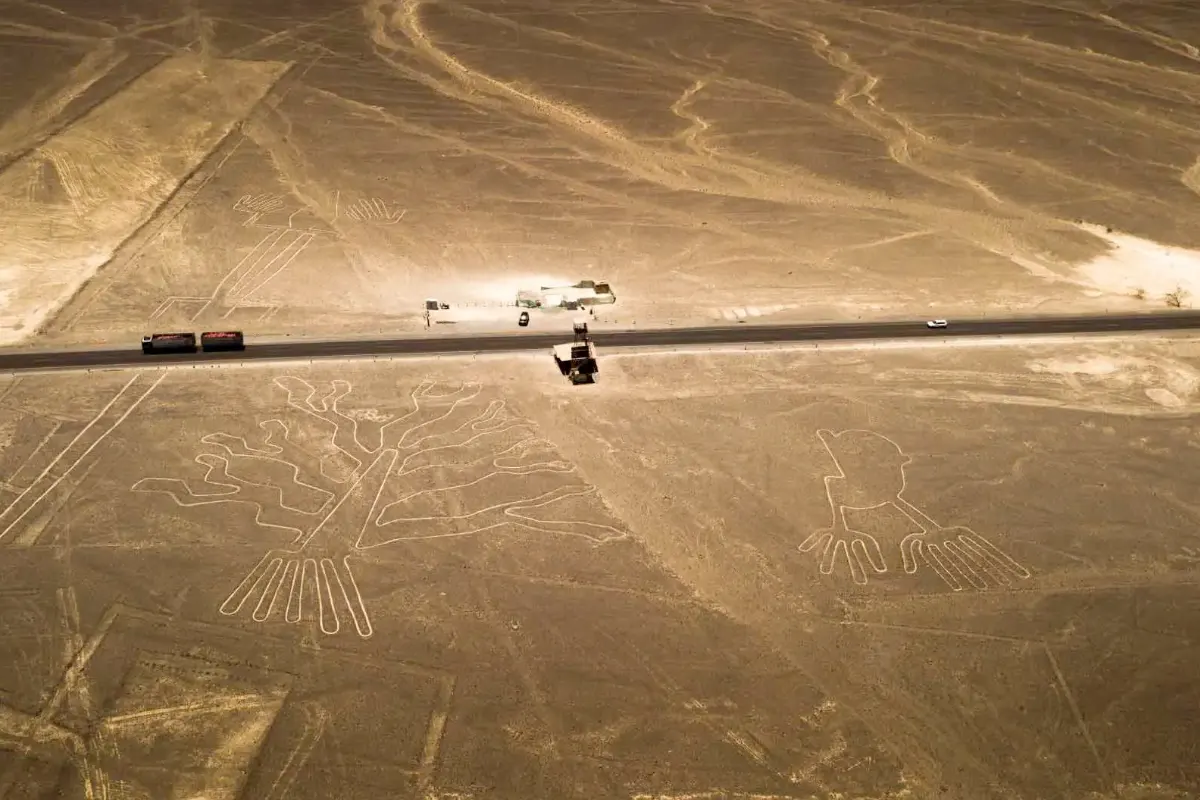The Nazca Lines are one of Peru’s most enigmatic and breathtaking archaeological sites, drawing interest from historians, archaeologists, and tourists alike. Located in the arid Peruvian coastal plain, some 400 km south of Lima, the geoglyphs stretch over an astounding 450 km². These enormous line formations, created between 500 BCE and 500 CE, depict various plants, animals, and shapes and remain one of humanity’s most extraordinary mysteries.
The purpose of the Nazca Lines has puzzled experts for decades. Initially discovered in 1927 by Peruvian archaeologist Toribio Mejia Xesspe, it wasn’t until the advent of flight that the full extent of these designs was understood. The lines are best viewed from the air, a fact that has fueled various theories about their purpose, including those suggesting they served as astronomical calendars, religious sites, or even alien landing strips.

The lines are created on the desert floor by removing the reddish-brown iron oxide-coated pebbles that cover the surface of the Nazca desert. When these pebbles are removed, they reveal a starkly contrasting light-colored sand below. Most of the figures are so large that they can only be fully recognized from an aerial view, a fact that adds to the mystery of how and why they were constructed by people who had no way of seeing them from the air.
Researchers have proposed several theories regarding the lines’ purpose. One of the most widely accepted theories is that the lines had a religious significance, serving as pathways during rituals to honor the gods, which were believed to control water and fertility in this dry region. Another theory suggests that they were part of sophisticated astronomical calendars, indicating the solstices and other celestial events crucial for agricultural planning in a region where understanding the seasons was essential for survival.

Recent studies have focused on the technological aspects of the Nazca Lines. Using drones and advanced imaging techniques, researchers have discovered previously unknown figures, bringing new insights into the complexity and breadth of the Nazca culture. These studies have also highlighted the Nazca people’s profound understanding of their environment and their ingenuity in adapting to one of the world’s most challenging landscapes.
Despite ongoing research, the Nazca Lines remain a profound mystery. Their creation by the Nazca culture, a pre-Incan civilization known for its artistic achievements and hydraulic engineering, underscores the human capacity for creativity and the desire to leave a mark on the earth that endures long beyond a single lifetime. As both a UNESCO World Heritage Site and a pivotal subject of archaeological study, the Nazca Lines continue to fascinate and inspire, a testament to the enigmatic allure of ancient human civilizations.





